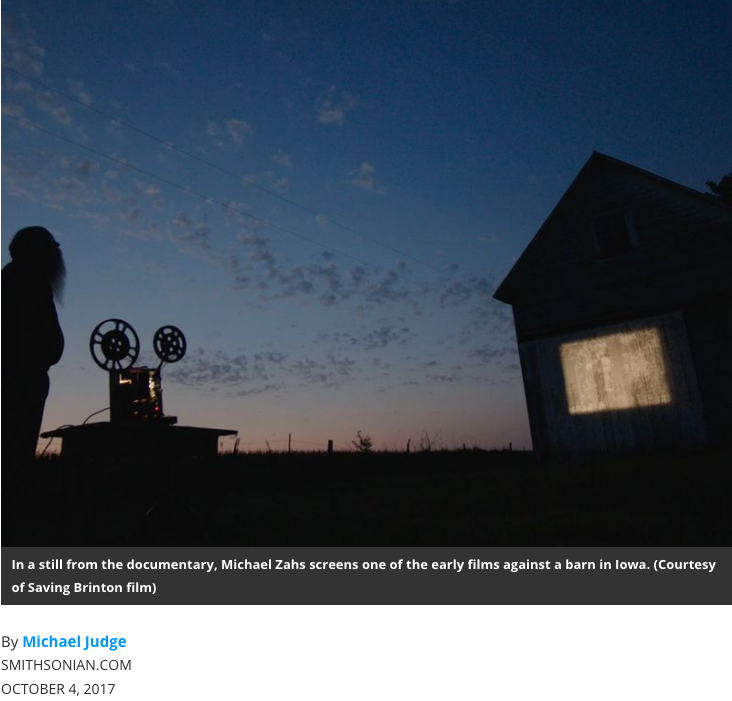
In the southern and eastern part of Iowa sits the town of Washington, population 7,424. Its picturesque town square and brick storefronts, not to mention its location in the heart of the American Midwest, make it seem like your ordinary small town. It's anything but. Washington's State Theatre, formerly an opera house, showed its first motion picture to an astounded crowd on May 14, 1897, making it, according to the Guinness Book of World Records, "the oldest continuously operating cinema theatre in the world."
Beyond that, the theater holds a never-before-told piece of film history, one that is the subject of a new documentary by filmmakers Tommy Haines, Andrew Sherburne and John Richard. Saving Brinton is an enchanting 90-minute documentary that tells the story of a collection of 130 early nitrate films-including two once believed to be lost by the great French illusionist and pioneering filmmaker Georges Méliès-and the local character who discovered them and saved them from oblivion.
How did these cinematic treasures end up in rural Iowa? To understand that one must first understand how movies usurped live theater as America's most popular form of entertainment.
Between the end of the Civil War and the Great Crash of 1929, tens of thousands of "opera houses" were built across the country, including hundreds in the state of Iowa alone. Rather than staging full-blown operas, they mostly served as community cultural centers where local groups and guilds could convene and traveling actors, singers, orators, musicians, magicians and the like could stage a show.

